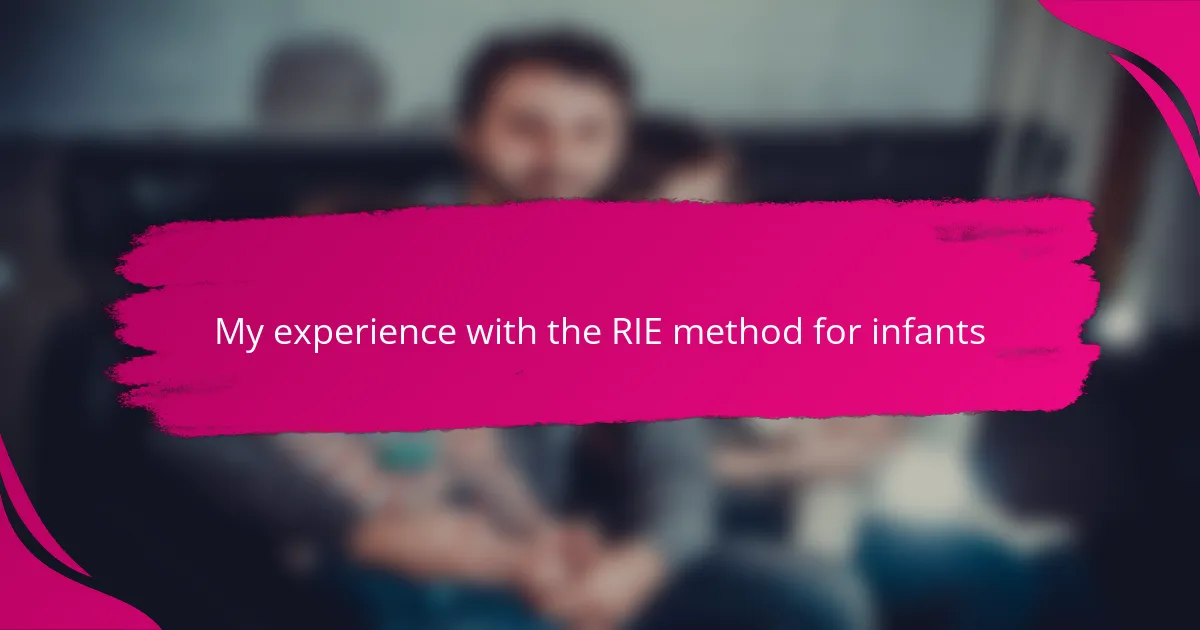Key takeaways
- The RIE method emphasizes respecting infants as capable individuals, fostering genuine connection instead of controlling behavior.
- Creating a safe yet challenging environment allows infants to explore independently, boosting their confidence and curiosity.
- Patience and attentive observation enhance communication and strengthen the bond between parent and child.
- Small, consistent changes in approach can significantly impact parenting positively, promoting trust in the infant’s abilities.
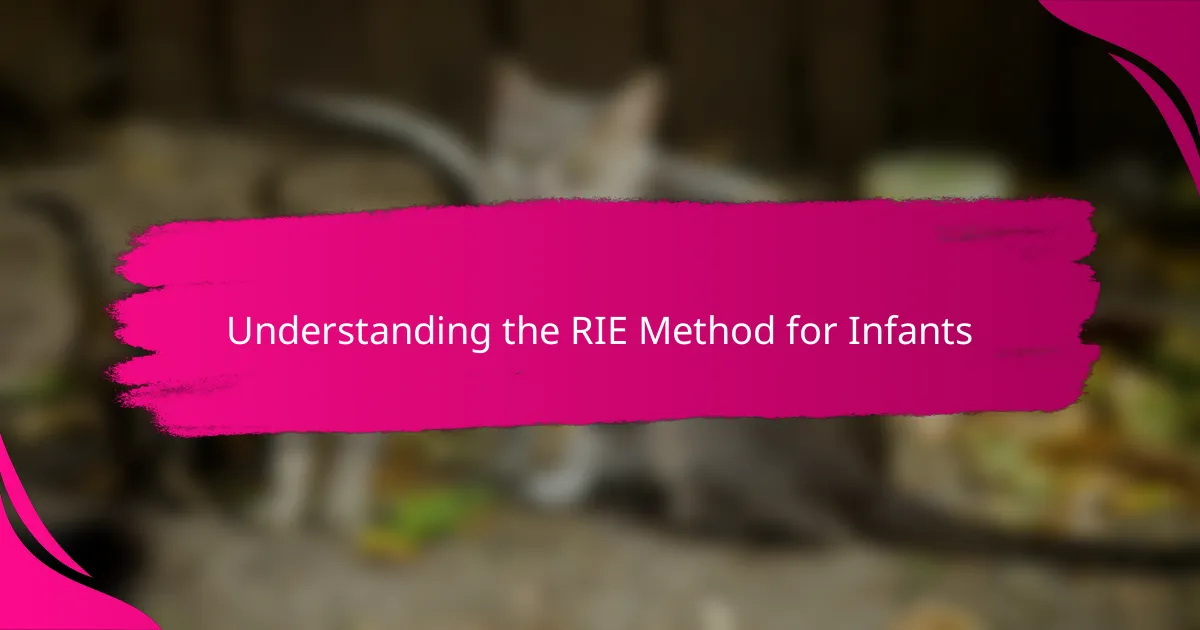
Understanding the RIE Method for Infants
When I first came across the RIE method, I was intrigued by its emphasis on respecting infants as capable individuals rather than just tiny, helpless beings. It encouraged me to pause and really observe my baby, asking myself, “What does my child need right now?” rather than rushing to intervene. This approach felt surprisingly empowering—it shifted my mindset from controlling to truly connecting.
One thing that stood out to me was the idea of creating an environment where my infant could explore safely and freely, without constant interference. It made me realize how often I had unconsciously interrupted my baby’s natural curiosity. Watching my child discover the world at their own pace was deeply rewarding and gave me a new appreciation for their early development.
Have you noticed how often we talk over or distract infants instead of listening? The RIE method challenged me to be present and attentive in a different way—to trust in my baby’s ability to communicate through subtle cues. This change transformed not only my interactions but also how I felt as a parent: more patient, more connected, and more respectful.

Key Principles of RIE Parenting
One key principle that really resonated with me is the commitment to treating infants as active participants in their own lives. Instead of rushing to fix or distract, RIE invites us to watch closely and respect their signals. I remember one afternoon when my baby was quietly focused on a toy—I resisted the urge to interrupt and just quietly observed. That moment of silence felt like a deep conversation between us, even without words.
Another principle that I found powerful is the emphasis on offering an environment that feels safe but not overprotected. It’s tempting to shield babies from every little challenge, but RIE encourages a balance where infants can safely explore and learn at their own pace. I noticed that when I gave my child space to try new movements or solve small problems, their confidence and curiosity grew naturally—without any pressure from me.
Have you ever thought about how often adults talk over infants, assuming they don’t understand? RIE challenges this habit by asking us to listen attentively and trust in the baby’s own way of communicating. It was a game-changer for me to slow down and really hear what my baby was expressing, even in the smallest gestures. This patience created a bond that felt authentic and deeply rewarding.
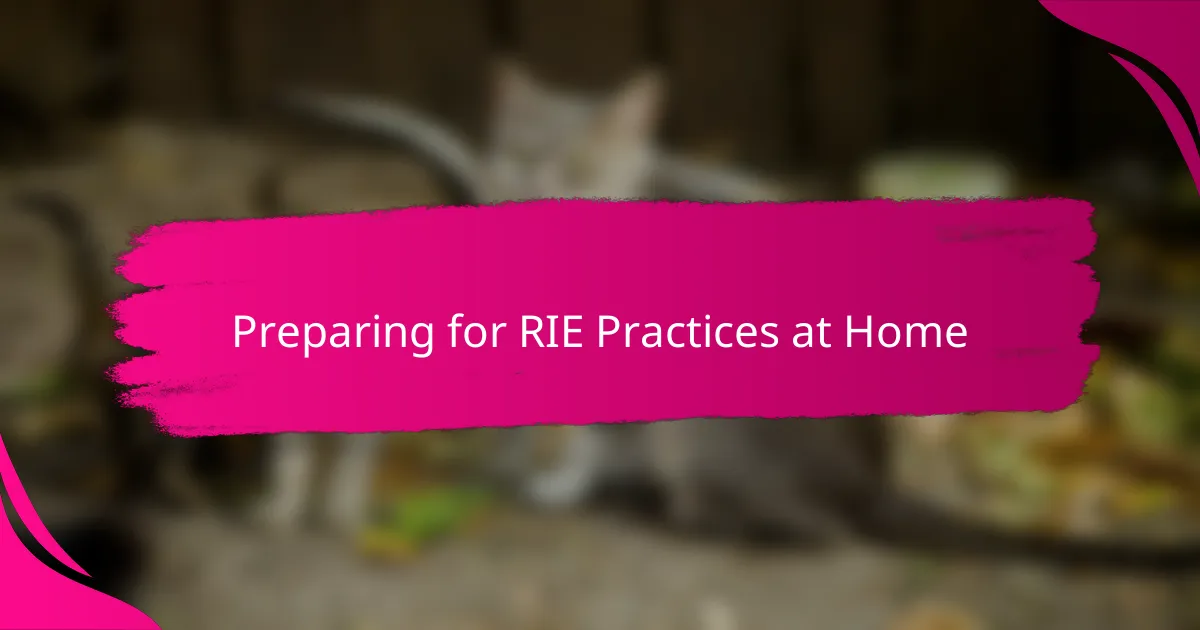
Preparing for RIE Practices at Home
Getting started with RIE at home meant rethinking the whole setup of our nursery. I realized that simplifying the space—removing clutter and choosing a few carefully selected, open-ended toys—helped my baby focus and explore without distractions. Have you tried watching your child engage quietly with just one object? It’s amazing what happens when they can take the lead in their own learning environment.
I also took some time to prepare myself mentally for the shift RIE requires. It wasn’t always easy to step back and resist the urge to jump in right away, especially when I worried about safety or development. But reminding myself that my baby’s natural curiosity is a powerful guide helped me stay patient and present, even when it felt challenging.
Finally, I made sure to carve out moments in our daily routine dedicated solely to observation and calm presence. Instead of rushing through diaper changes or feeding, I treated those times as opportunities to connect without interruptions. Have you noticed how those small pauses can transform your understanding of what your baby really needs? That mindful preparation created a foundation of trust and respect that made all the difference.
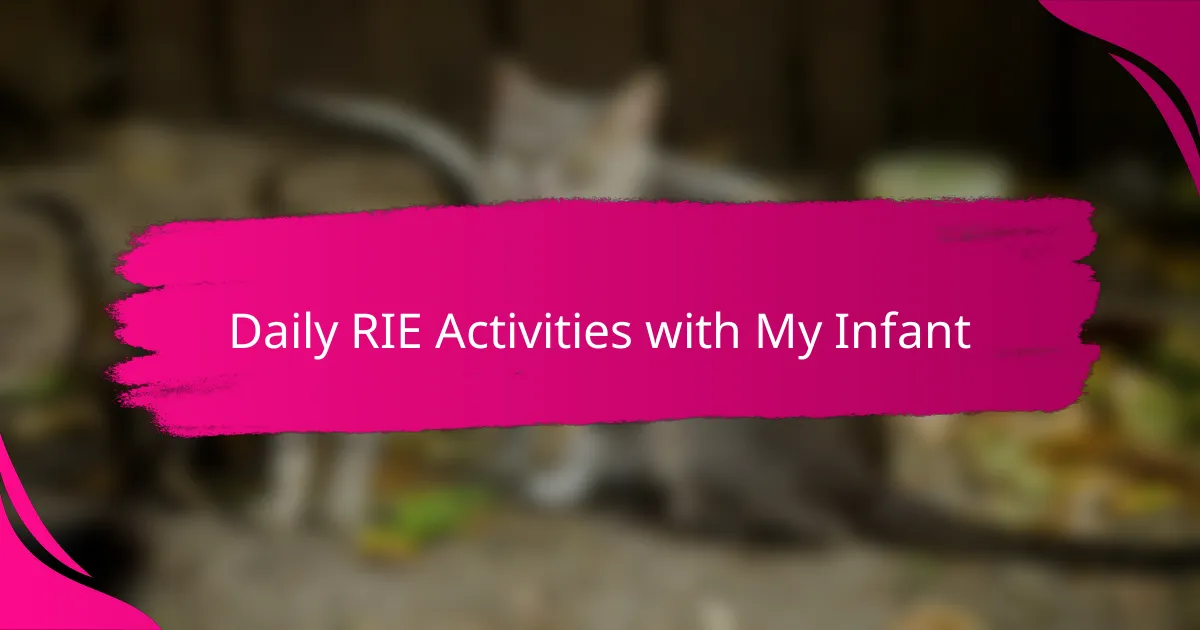
Daily RIE Activities with My Infant
Spending daily time with my infant using the RIE method quickly became a cherished ritual. I noticed that simply sitting nearby and letting my baby explore a wooden block or a soft cloth without interference sparked joy and deep focus in those small moments. Have you ever seen how intense a baby’s concentration can be when they’re given space to discover on their own?
One morning, while my infant was quietly examining a rattling toy, I resisted the urge to point out how it worked or try to “entertain” them. Instead, I stayed silent and just watched. The peacefulness of that experience made me realize how much babies appreciate being trusted to lead their own play. It felt like I was learning a whole new language of communication based on observation and respect.
Sometimes, daily activities like diaper changes or feeding become opportunities for calm connection rather than rushed routines. I began narrating what I was doing, acknowledging my baby’s feelings, and truly allowing moments of stillness. Did it change our relationship? Absolutely. Those seemingly ordinary tasks turned into moments where my infant and I truly connected, reinforcing the trust and respect at the heart of RIE.
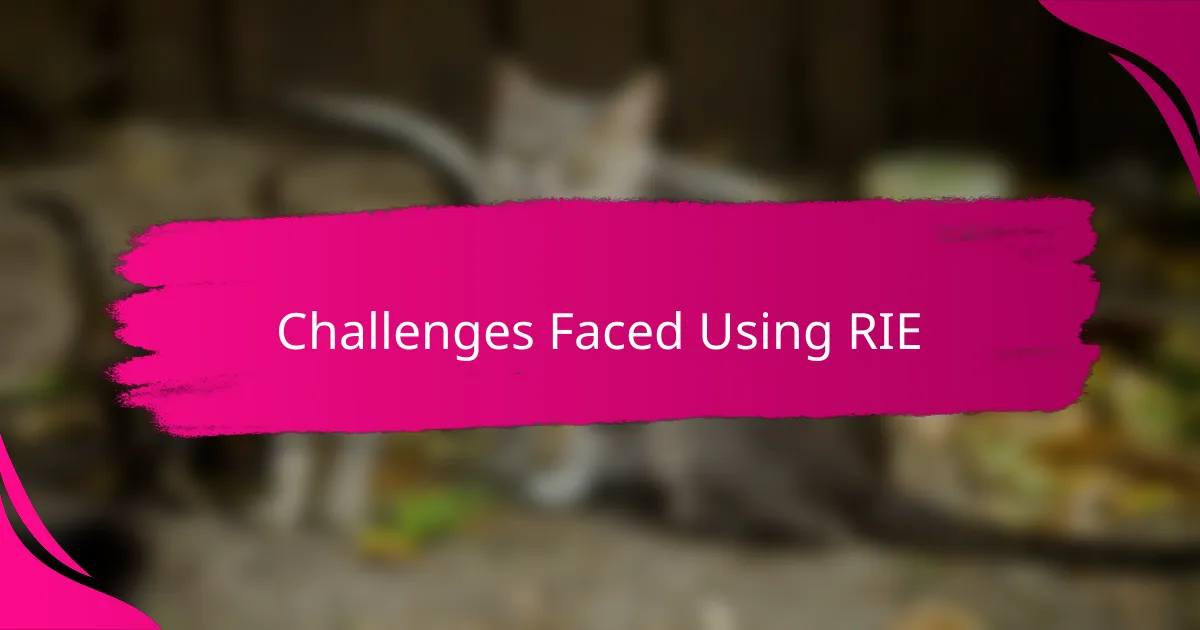
Challenges Faced Using RIE
Adopting the RIE method wasn’t without its hurdles. I often found myself wrestling with the instinct to jump in quickly when my baby struggled or seemed frustrated, but RIE asks us to hold back and observe instead. It felt counterintuitive at times, almost unnatural, and I wondered if I was really doing enough to support my child.
Another challenge was managing the reactions of friends and family who didn’t understand why I wasn’t constantly interacting or entertaining my infant. Their concerns made me second-guess whether I was following RIE correctly, adding an unexpected layer of pressure. Have you ever felt like your parenting choices were under a microscope? I certainly did, and it was tough to stay confident in my approach.
There was also that awkward adjustment period when I needed to simplify our environment—not just physically but mentally. Removing distractions and giving my baby space to explore meant resisting the temptation to overcompensate with toys and noise. It took patience to accept the quiet and trust that my child was learning, even when it didn’t look like the usual baby “busywork” everyone expects.
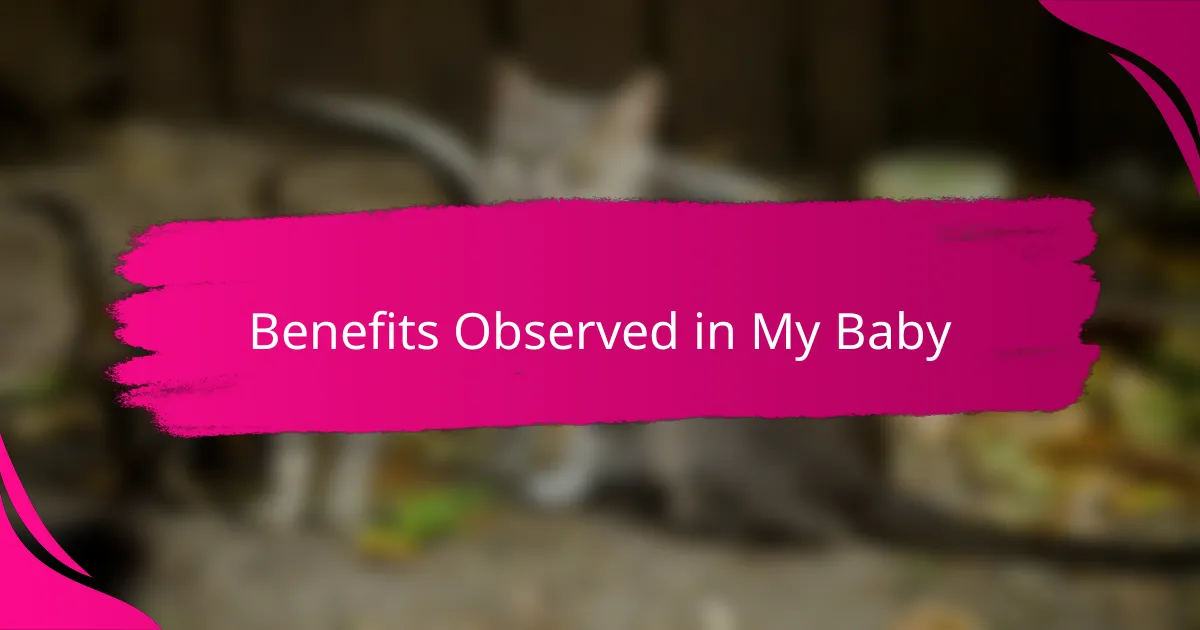
Benefits Observed in My Baby
What really surprised me was how much more confident my baby became when given the chance to try things independently. I noticed fewer tantrums and more moments of quiet focus, as if my little one was proud of figuring out small challenges alone. Have you ever witnessed that spark when a child finally masters something new without rushing help? It’s truly special.
Another benefit I observed was how our bond deepened through simple observation and respect. Instead of constantly intervening, I found myself appreciating my baby’s unique pace and personality more. There was a gentle calm that settled between us—a trust that I believe grew stronger every day through attentive presence.
I also saw how patience played a key role in my child’s development. Waiting without interrupting allowed my baby to communicate needs in subtle ways I hadn’t noticed before. This made me reflect: how often do we miss those quiet messages in the rush of everyday life? Adopting RIE opened my eyes to a whole new language spoken through tiny gestures and expressions.
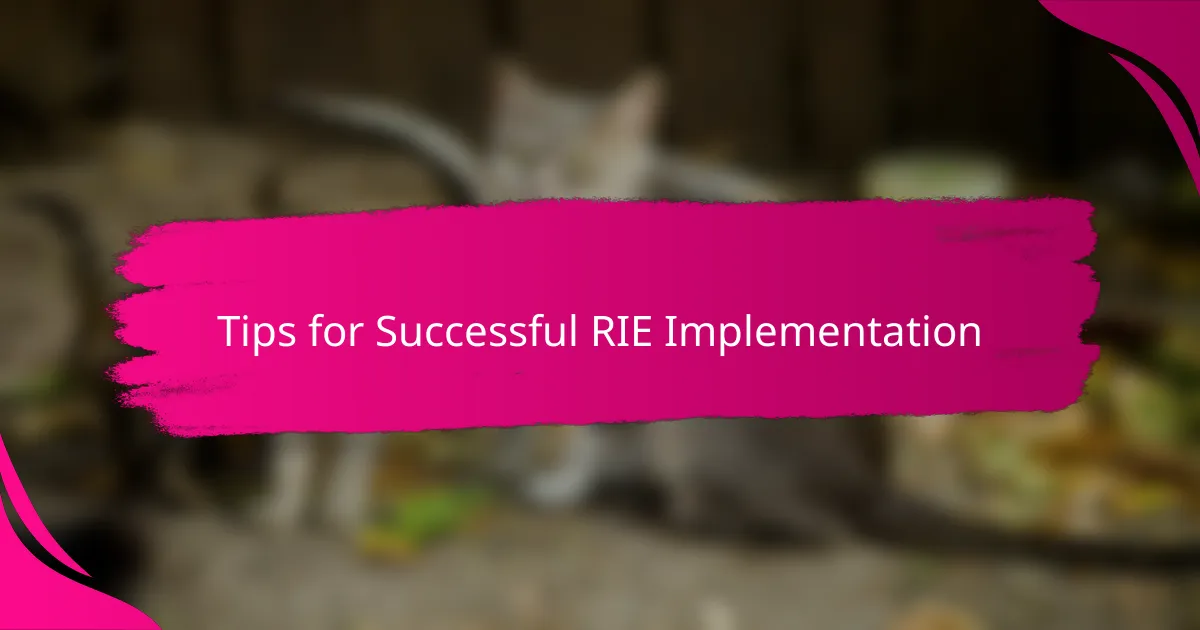
Tips for Successful RIE Implementation
One tip that really helped me was to start small and be consistent. I found that trying to implement every aspect of RIE all at once was overwhelming, so focusing on one moment of respectful observation each day made the shift feel manageable. Have you ever felt like small changes create the biggest impact over time? That steady patience made me more confident and less stressed.
Another important piece was learning to trust my baby’s capabilities, even when instincts pushed me to step in quickly. There was one afternoon when my little one was trying to reach a toy just out of reach—I felt the urge to grab it but held back instead. Watching that effort unfold naturally taught me how valuable that struggle is for growth, and honestly, it deepened my respect for my infant’s resilience.
Finally, I discovered that communication with others was crucial. Explaining the RIE approach to family and friends helped ease the pressure I felt to “entertain” or intervene constantly. Have you encountered skepticism about your parenting choices? I did, but sharing why I believed in giving my baby space to explore transformed those conversations and strengthened my resolve to stay the course.
